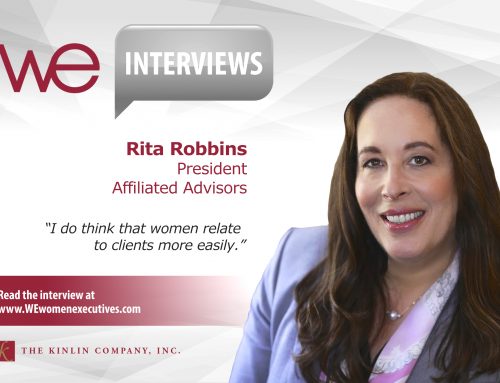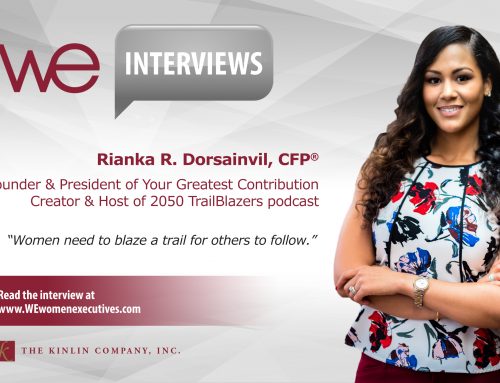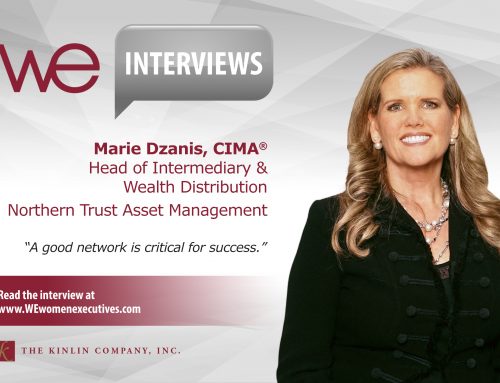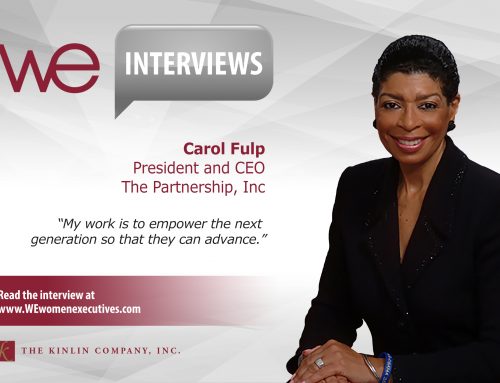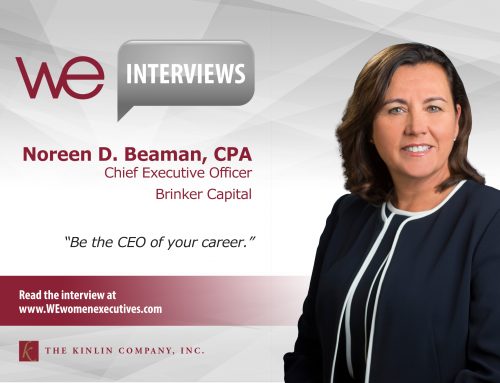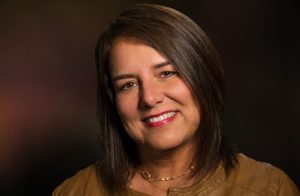 Sheila Ronning
Sheila Ronning
Founder & CEO
Women in the Boardroom
As founder and CEO of Women in the Boardroom, Sheila Ronning is not just the visionary behind the organization; she’s also the strategist, head of HR, and the last one to turn out the lights each night. Ronning views herself as an entrepreneur, but she also remains deeply involved in the day-to-day business of running the organization, overseeing all aspects of the company and managing all of the staff.
Given the increased attention to the importance of women serving on corporate boards, I was eager to speak with Ronning about her inspiration for Women in the Boardroom and her feelings on how the corporate environment has changed since she started the organization more than a decade ago.
Identify a need
When Ronning launched Women in the Boardroom in 2002, the absence of women in boardrooms was not in the forefront of the corporate conscience the way that it is today. In light of that fact, what was it, I asked, that compelled her to start this organization at this time?
“Women in the Boardroom has evolved over the years; it started 14 years ago – before the issue was the hot topic that it is today – as an annual event in Minneapolis, where I’m originally from. I was an entrepreneur doing sales, marketing and PR consulting and had created a very successful business-to-business networking event for small business owners. Because we experienced such huge growth with that concept, my mentor came to me and said, ‘You’re good at putting events together and getting people in the room, and I am passionate about helping women get into the boardroom. I would love it if you started an event focused on helping them.’
“Thankfully, I was smart enough to listen to her and created an annual event in which we educated attendees on topics such as what is the job of a corporate director, what happens behind those closed doors, why serve, and how to get a seat at the table. Fortunately, Minnesota is home to many large companies – Best Buy, Target, Carlson, and 3M to name a few – and there were several women pioneers who had been serving as corporate directors for years who wanted to help and volunteered to speak at our events.
“After a few years of packing the room in Minnesota and with my mentor’s prodding, I started taking the event to other cities. Chicago was our first, in 2006, and by 2010, we were in 15 cities nationwide.
“During the time that we were adding on cities, groups started popping up in the local cities we were in, offering the same topics, same format, etc. While I was thrilled the topic seemed to be picking up attention, I also started wondering if what we were doing was relevant anymore and if we were really helping to move the needle. At the same time, I had a number of senior-level executive women talking to me at the events, saying ‘This is a great program and while I am learning a lot, I am really serious about getting onto a corporate board and I need more information; one event a year is not enough.’ At the time, I had no idea how I could help them. It was a lot of work putting together these events and they were not proving to be cost effective.
“Although the topics we had at our events were similar in each city, our speakers (both women and men) shared varied experiences and strong opinions each time. After nine years of listening to the 200+ corporate directors who spoke at our events, I had learned a lot and often found myself wanting to jump out of my front row seat to add to the discussion (sometimes to offer conflicting information to the speakers). But I was too intimidated. I was simply the person who had created this event and somehow managed to convince these amazing corporate directors to come and share their knowledge. It wasn’t until I started talking one-on-one with people who aspired to get onto corporate boards that I realized that I actually had an incredible amount of information to help women get their seat at the table.
“Not only were similar groups popping up and women were telling me they needed more from us, but there were also a few other key things happening during this time. One was the financial crisis, which I proudly told people “was not affecting us.” I had also moved from Minneapolis to New York, where I knew virtually no one, for a relationship which ultimately didn’t work out. A lot was going on, and I was caught up in my personal life and not paying attention to the business like I should have been. Well guess what? The financial crisis was hitting us and by the time I realized it, it was too late. The company was in trouble, which means the entrepreneur running it is also in trouble.
“That demand on my time, coupled with our target market’s need for more information and the subsequent financial crisis, eventually forced me to completely revamp my business.I decided to create a roadmap to the boardroom.”
Get out there
Obviously Ronning was just one of many affected by the economic downturn, but as someone who had built a business on creating communities, I was curious to learn what steps she took when she realized her current situation was no longer viable. When you realized there was a problem, I queried, what did you do?
“I decided to hunker down and do what I knew best, which was network. For example, I knew a woman from the events that we’d been doing in New York, so I reached out to her, and she introduced me to one person and then that person introduced me to another, and so on. I always followed up, and I also attended everything. I wanted to stay in and hide, but I had to get out there. At first I felt uncomfortable and was nervous that these New Yorkers wouldn’t approve of this Midwestern girl, but I knew I had to get out there and be myself. And of course, as it turns out, most everyone in NYC is from somewhere else and this city is made up of amazing people who want to help.
“One woman who really made an impact on me (and there were many!) was Carol Morley, a very popular executive coach. I was fortunate to cross paths with her at one of our events. She invited me to lunch and asked to hear my story. At this point I had decided I was no longer in a place where I could afford to hide the troubles I was facing so I shared my situation, and she graciously offered to help pro bono. She pointed out the fact that I could no longer afford the 15-city tour and suggested I only have events in NYC, not only because the multi-city tour was no longer was financially feasible, but also because New York City has more senior level executive women than all of the other cities combined. I took her advice and started having events only in New York, and I had them monthly so I could put a stake in the ground. Having only local events also freed up some time for me to create our membership platform.”
Focus your efforts
Clearly Ronning’s decision to reboot the organization was a sound one; in 2017, Women in the Boardroom will mark its 15-year anniversary and interest in the group remains high. This fact led me to my next question: how is the organization structured now, who does it serve, and what does it offer members?
“As a membership organization, we work strictly with senior-level executive women. Our membership program has evolved drastically since 2011. When a senior-level executive is interested in serving on a corporate board, she joins at our VIP level. In the beginning, we were working with aspiring directors and offered one level of VIP membership. Now we have renewing members who have their seat at the table and we also have experienced directors joining as first-time members to gain additional seats. Experienced directors and aspiring directors have different needs, so we now offer three different VIP levels.
“The level at which a person joins dictates how much one-on-one coaching is included, but during the coaching phase we ensure they have a board portfolio that highlights their background for board positioning, we help them identify the size and type of boards they are qualified for, we make sure they are able to clearly articulate their value-add, and we teach them how to reach out and talk to their network. In addition, we provide knowledge through webinars and in-person events. The topics covered range from what to expect in a board interview to how and/or why to exit a board and everything in between. And we provide connections. The connections may be to experienced directors who provide them with the knowledge of what their first year of board service will be like, they may be to executive recruiters, or they may be to one of the many board seats for which we receive notifications. While we are not a search firm, companies contact us when they have a board seat to fill. In fact, we recently just sent out our 100th board seat notification to our members.
“I want to go back to our networking process. This step is vital to getting your seat at the table; you can ask any corporate board director and they will tell you the same. We know less than 15 percent of all board seats are being filled by a search firm, and even when a firm is retained, the recruiter turns to the white guys at the table and says, ‘Who do you know?’ During our process, we have you create a list of the influencers and connectors who are already in your network. It is important to think of the people you have known throughout your career who fall into one of those buckets. They do not have to be current board directors; you might have worked for them or they may have worked for you. If they are an influencer or connector, they go on the list. Each person is put into a category and this will determine how the outreach is made and what is said. We then suggest how to make the ‘ask’ and how to maintain these relationships.
“What I’ve discovered over the last five years of going through this process with our members is that typically they don’t realize what amazing networks they have until we have gone through the exercise. Some of their connections are serving on boards that they might not be qualified for, are not interested in, or that may present a conflict of interest. But that doesn’t mean they wouldn’t be a good connection for another member. So I created a matchmaking program to utilize these impressive connections, and I really feel like it’s going to be the game changer for women.
“Here’s how it works – we’ll use you as an example. To participate in the matchmaking program, you must contribute five companies to our list, which currently includes as many as 250 companies every month. We take your list and supplement it with additional information, e.g., whether the company is public or private, the industry, the revenue, etc., and if the company’s private, we’ll also add the website and a company description.
“Now, say you’re interested in ABC Company – you must tell us why you are interested and why you’re qualified to be connected to them. We share your information with the VIP member who has the company connection (we’ll call her Sally) and say, ‘What do you think?’ If Sally thinks you’re a good fit, you two have a phone conversation. After that phone call, Sally decides whether or not she wants to facilitate an introduction. This is an important step because making an introduction is really a branding exercise – both for the member and for Women in the Boardroom – so we want to ensure that the executive is a good fit for the company and qualified to serve on a board.
“If Sally feels like you’re a good fit, she calls her board contact and says, ‘Hello Bob, I know you’re on the board of ABC Company, and I know Ellen through Women in the Boardroom, and I feel like she is someone you should talk with. I think her qualifications would be very interesting to you, but please understand, Ellen doesn’t have any expectations that she would be an automatic shoe-in for your board, now or later. I think you would find a conversation mutually beneficial and I would appreciate it if you would have a phone conversation with her.’
“After the call, Sally provides an email introduction between you and Bob, and now it’s your responsibility to follow through. You need to make sure that phone call to Bob happens, and you need to build a relationship with him. So when you speak to Bob, you’re telling him about yourself, but you’re also asking him, ‘What can I do to help you?’ In other words, you’re building a relationship with him, so hopefully when a board opening does come up, he thinks of you.”
Work your network
Given that executives are paying for membership privileges in the organization, I was curious to know what benefits they gleaned. What, I asked, should a VIP undergoing ‘board prep’ expect to learn?
“The benefits that are included will depend on which of the three VIP levels is selected and is also based on the member’s experience. The board opening notifications, matchmaking program, virtual group check-ins, unlimited webinar viewing, invitations to VIP meet-ups and an invitation to our Annual Board Assembly are all included.
“I am thrilled to report that since moving from the event model to a membership model five years ago, we are seeing progress. Since then, 46 of our members have gotten onto corporate boards. I think that is significant for many reasons and it tells me that boards are realizing the need to have diversity of thought at the table. I believe that a smart board will have a matrix, the first column should be a list of skillsets needed on the board and the other columns should be a mix of other pertinent items that include gender, race and age. Those are the boards that are truly fulfilling their fiduciary duty.”

